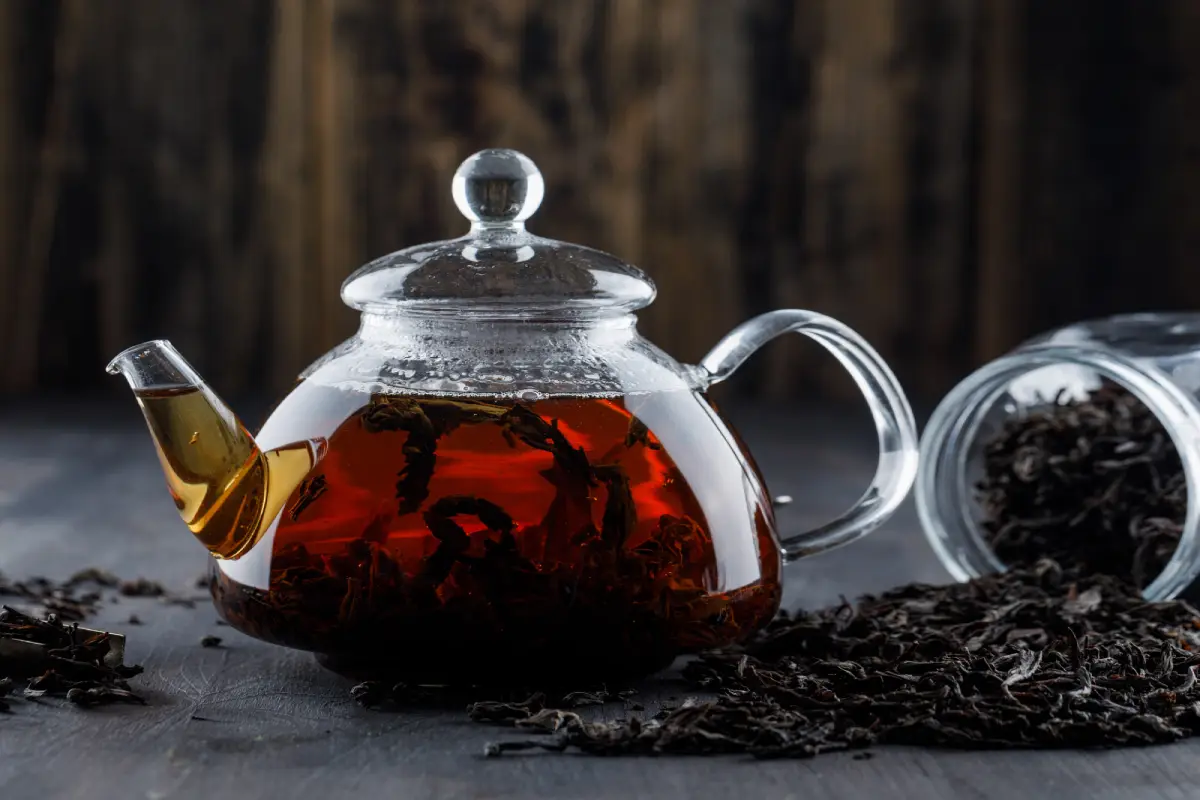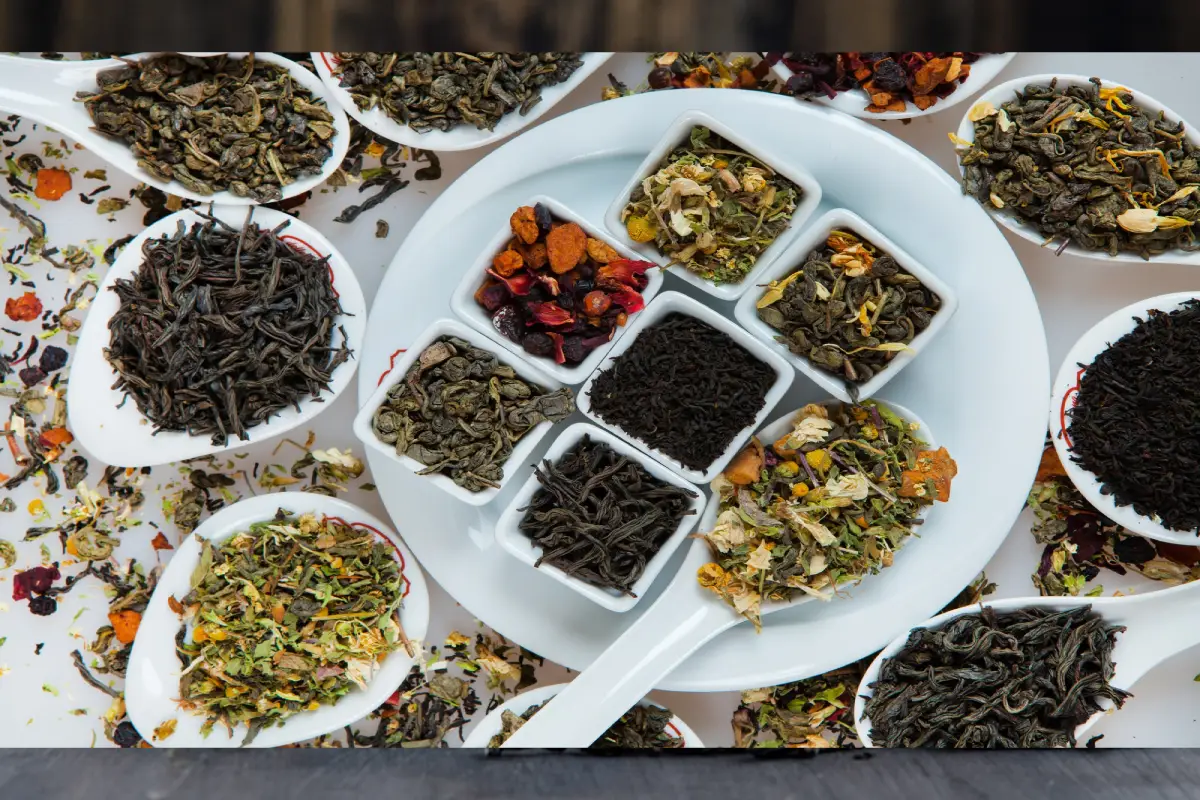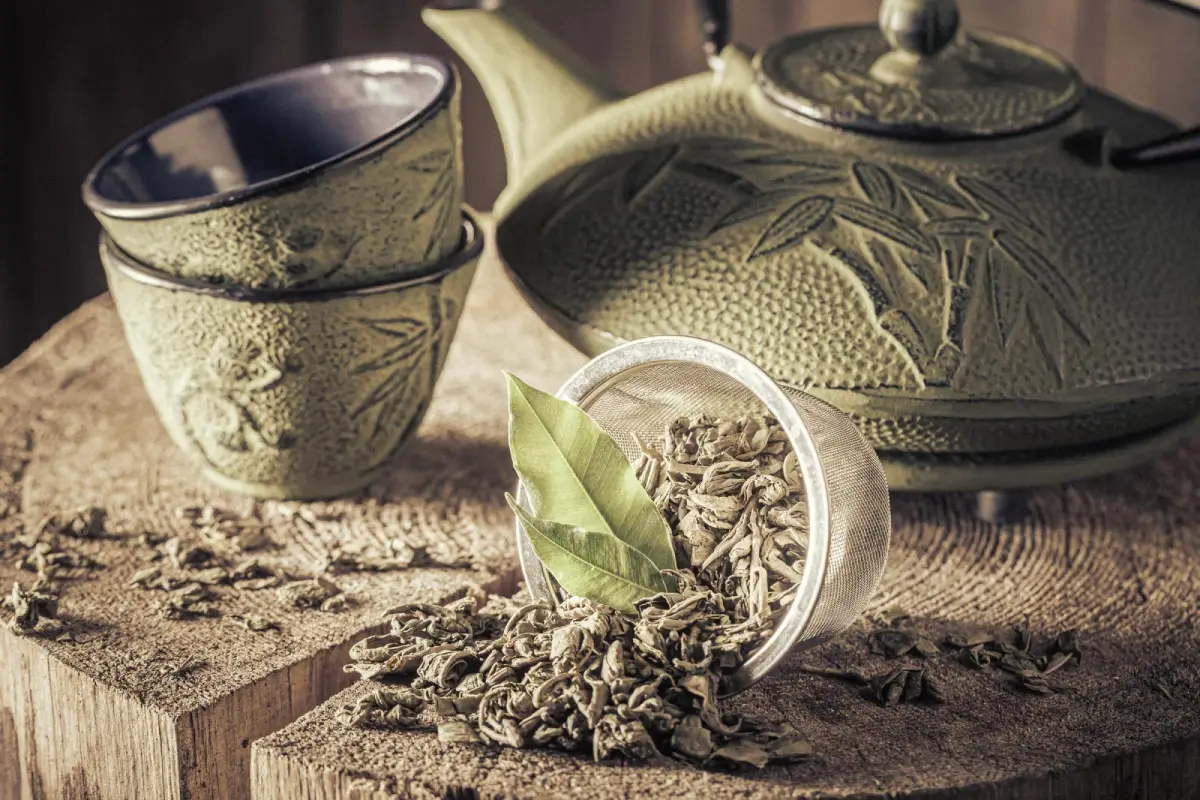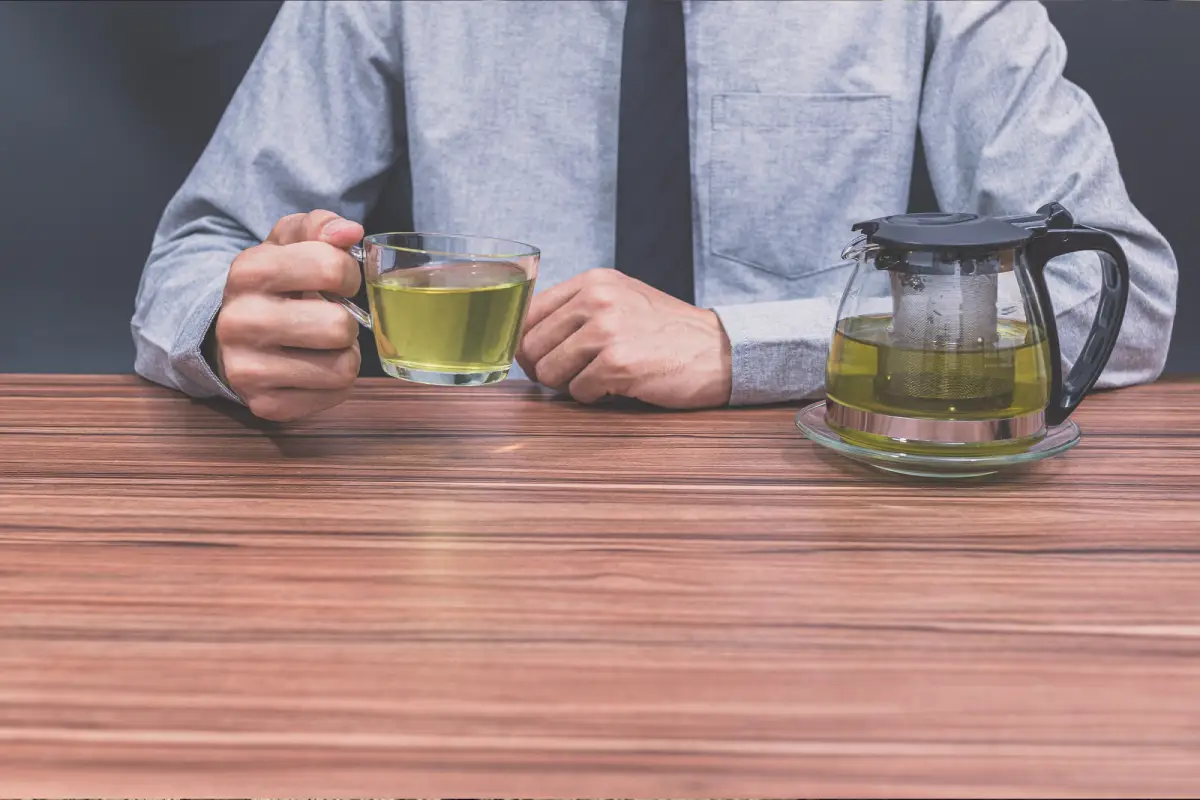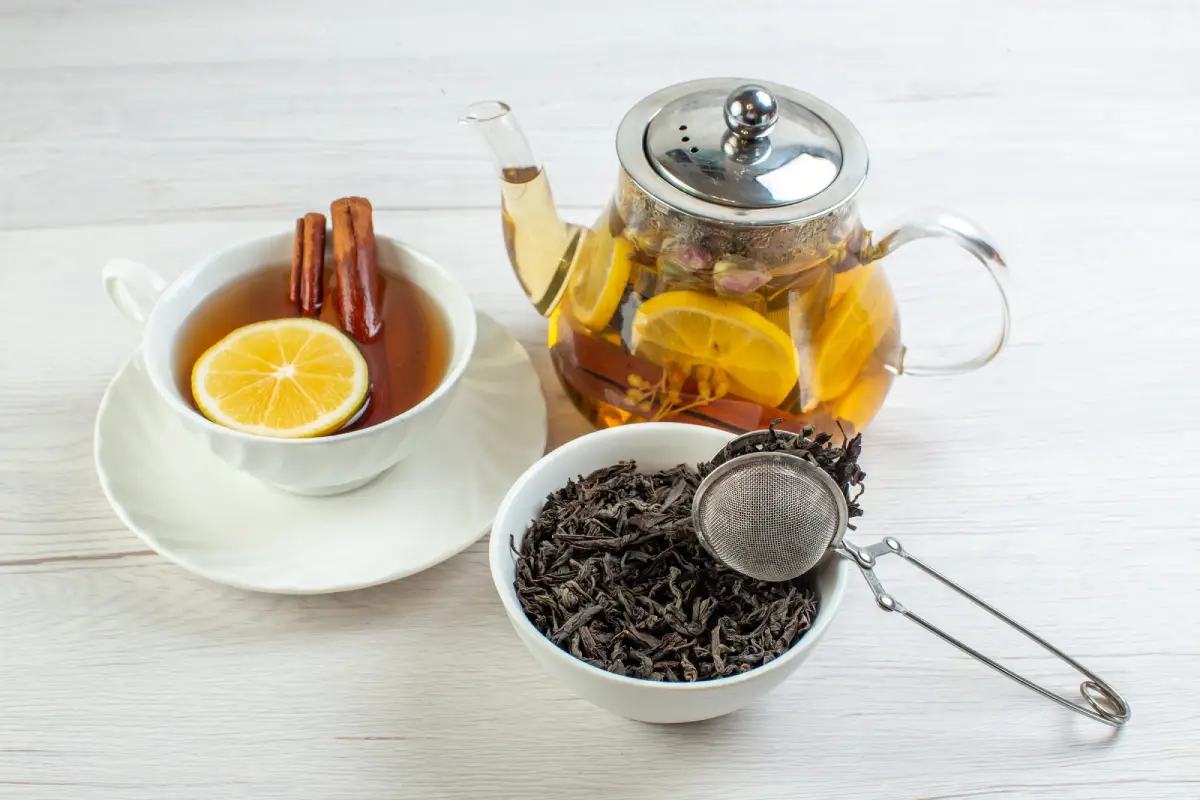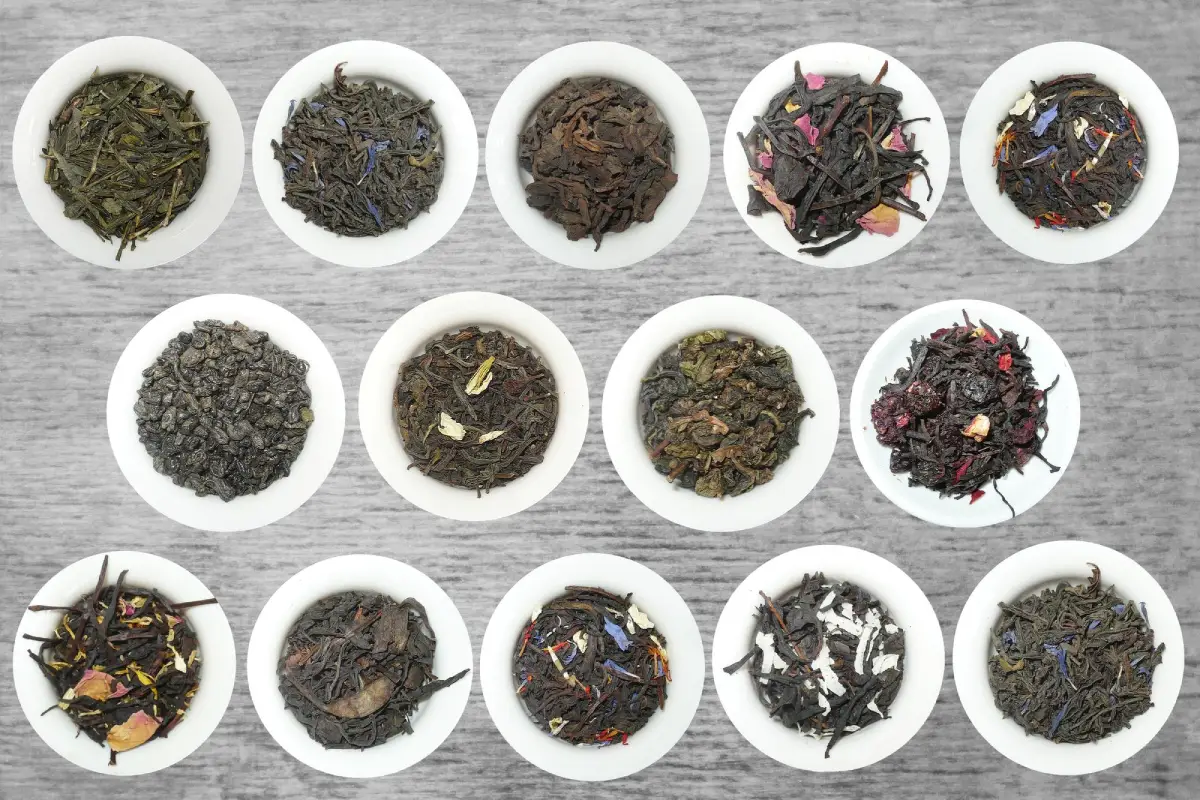Discover the essence of Earl Grey tea, a blend steeped in tradition and loved by many. The name honors a 19th-century British Prime Minister and today signifies a distinct tea flavored with bergamot oil. This guide will take you through Earl Grey’s rich history, its health benefits, and how to brew it perfectly. Whether you need a morning boost or an evening soother, Earl Grey is versatile and comforting.
Stay with us as we answer common questions and offer insights into enjoying Earl Grey tea to its fullest.
The Unique Flavor Profile of Earl Grey Tea
A sip of Earl Grey tea is a journey into a world of flavor unlike any other tea. Its distinct taste has won over many tea lovers. This section explores the elements that make Earl Grey a unique brew.
The Signature Ingredient: Bergamot Oil
Embarking on the Earl Grey experience is to embrace a tea that stands out in the crowded world of teas. Its signature taste captures the imagination and tantalizes the taste buds of those who seek something beyond the ordinary. Let’s delve into the factors that craft Earl Grey’s distinctive flavor.
The Signature Ingredient: Bergamot Oil
Central to Earl Grey’s character is bergamot oil. This fragrant extract, sourced from the peel of the bergamot fruit, bestows a unique citrusy essence that is instantly recognizable and remarkably aromatic.
Variations in Taste
Furthermore, the base black tea plays a crucial role in the final flavor. The tea can range from the strong Assam to the delicate Darjeeling, each providing a different backdrop for the bergamot’s flourish. Consequently, the infusion process can alter the intensity and subtlety of the flavor, offering a spectrum of experiences.
Taste and Sensory Experience
Moreover, the act of enjoying Earl Grey is as much about the aroma as it is about taste. The bold fragrance sets a promising stage, while the interplay of warm tea and cool bergamot creates a full-bodied flavor followed by a pleasantly sharp finish.
Pairing with Food
In addition, Earl Grey’s robust flavor profile makes it an excellent partner for a wide array of foods. It cuts through the richness of desserts and adds a refreshing note to savory dishes, demonstrating its versatility in culinary pairings.
Personalizing Your Earl Grey
Finally, personalizing your cup of Earl Grey can transform the experience. Whether you prefer it pure, with a splash of milk, or a hint of honey, the way you tailor your Earl Grey can make each cup a unique personal statement.
History and Origins
Earl Grey tea boasts a rich history that intertwines with the lore of British aristocracy. This section unveils the journey of Earl Grey from its noble beginnings to becoming a beloved global beverage.
Birth of a Blend
The story of Earl Grey begins in the early 19th century, attributed to Charles Grey, the second Earl Grey and British Prime Minister. Legend has it that the tea was a gift, formulated by a Chinese mandarin to Grey, blending black tea with bergamot to offset the limey taste of water at Grey’s residence.
Spreading Far and Wide
Initially, this tea was a luxury, enjoyed by the upper echelons of British society. However, as trade routes expanded, so did the tea’s popularity. By the late 19th century, Earl Grey had captivated tea drinkers far beyond the shores of Britain.
A Modern-Day Favorite
Today, Earl Grey remains a staple in the tea community. Its timeless appeal has led to numerous variations, each offering a unique take on the classic. Moreover, its role in public rituals and private moments alike cements its status as a versatile and enduring choice among teas.
Legacy and Cultural Impact
Earl Grey’s influence extends beyond taste. It has played a part in cultural practices, tea ceremonies, and even inspired works of literature and art. Additionally, the tea’s association with elegance and refinement continues to hold sway in popular imagination.
Preservation of Tradition
Despite its evolution, the essence of Earl Grey tea—its distinct bergamot flavor—remains unchanged. This commitment to tradition ensures that each cup offers a link to the past, inviting tea lovers to partake in a rich history with every sip.
Health Benefits of Earl Grey Tea
Earl Grey tea is not only known for its unique flavor but also for the numerous health benefits it offers. This section explores how incorporating Earl Grey into your daily routine can contribute to overall wellness.
Antioxidant Properties
This tea is rich in antioxidants, primarily due to its black tea base. These antioxidants help combat free radicals in the body, reducing oxidative stress and potentially lowering the risk of chronic diseases.
Heart Health
Studies suggest that the flavonoids in Earl Grey may improve heart health. Regular consumption can help lower bad cholesterol levels and increase good cholesterol, thus supporting a healthy cardiovascular system.
Digestive Aid
The bergamot in Earl Grey has been known to ease digestion. It helps to soothe an upset stomach, reduce inflammation, and promote overall digestive health.
Energy Boost Without the Jitters
While Earl Grey does contain caffeine, its levels are typically lower than those found in coffee. This means it can offer a gentle energy boost without the risk of caffeine jitters or anxiety, making it a preferred choice for many.
Mental Clarity and Stress Reduction
The aroma of bergamot oil in the tea has calming properties. It can aid in reducing stress and anxiety levels, while also enhancing mood. Furthermore, the caffeine present can improve focus and alertness, contributing to mental clarity.
Immune System Support
Bergamot oil has natural antibacterial properties that can help strengthen the immune system. Drinking Earl Grey may help fend off colds and flu, thanks to its immune-boosting effects.
Skin Health
The antioxidants in Earl Grey tea can also benefit the skin. They help protect the skin from premature aging and damage caused by UV rays and pollution.
Brewing the Perfect Cup of Earl Grey
Mastering the brew of Earl Grey tea can elevate your tea experience from ordinary to extraordinary. This section offers step-by-step guidance to ensure you enjoy the full range of flavors Earl Grey has to offer.
Choosing Your Tea
Firstly, select a high-quality tea. Whether you prefer loose leaf or tea bags, the quality of the tea will significantly impact the taste. Loose leaf teas often provide a fresher and more authentic flavor profile.
Water Quality and Temperature
The water you use is just as important as the tea itself. Fresh, filtered water is recommended to avoid any interference with the taste. When it comes to temperature, Earl Grey tea thrives at around 208°F (98°C). For a comprehensive guide on tea temperatures, check out Tea Association of the USA‘s recommendations. Boiling water can scald the leaves, so allow your kettle to rest a minute before pouring.
Steeping Time
The perfect steeping time for this tea is typically between 3 to 5 minutes. Steeping for too short a time will yield a weak tea, while too long can result in a bitter taste. Adjust according to your preference for strength.
To Milk or Not to Milk
Adding milk to Earl Grey is a matter of personal taste. While traditionalists may prefer it straight, a splash of milk can soften the citrus notes of bergamot for those who enjoy a creamier texture.
The Addition of Sweeteners
If you find Earl Grey’s flavor too bold, consider adding a sweetener. Honey or sugar can enhance the tea’s natural flavors without overpowering the delicate balance of bergamot and black tea.
Enjoying Your Tea
Finally, the best cup of Earl Grey is one enjoyed at your leisure. Take a moment to savor the aroma before your first sip, allowing the blend of flavors to fully reveal themselves.
Earl Grey Tea Varieties and Blends
The rich tapestry of Earl Grey tea is woven from various threads, each variant adding its unique hue to the overall picture. As we delve into the spectrum of Earl Grey blends, it becomes clear how each one brings its own story to the table.
Classic Earl Grey
Beginning with the original, Classic Earl Grey lays the foundation. It harmoniously blends black tea with the distinct flavor of bergamot oil. This essential version sets a high bar, balancing the citrus zest with the tea’s inherent depth.
Lady Grey
Moving on, Lady Grey offers a gentler embrace. This variation introduces additional layers of citrus, such as orange and lemon peel, softening the traditional profile for a more nuanced cup. It’s an inviting option for those seeking a milder introduction to Earl Grey.
French Earl Grey
Furthermore, French Earl Grey enriches the palette with floral undertones, adding petals from roses, lavender, or cornflowers. This fragrant twist captures the senses, appealing to those who cherish the interplay of tea and flowers.
Earl Grey Green
Similarly, a shift towards Earl Grey Green presents a refreshing alternative. Replacing the black tea base with green tea, this version lightens the mood, offering a delicate dance of green tea’s subtlety with bergamot’s vivacity. It’s a delightful deviation for enthusiasts of lighter teas.
Rooibos Earl Grey
Conversely, Rooibos Earl Grey provides a caffeine-free journey. By incorporating the South African rooibos herb, this blend marries the herb’s sweetness with bergamot’s citrus spark, suitable for any moment’s quiet reflection or nighttime repose.
Smoky Earl Grey
Lastly, the adventurous spirit of Smoky Earl Grey emerges. Utilizing Lapsang Souchong’s smoky essence, this daring variation introduces a robust, aromatic dimension, captivating those in search of a tea that makes a bold statement.
Earl Grey Tea in Cuisine: Cooking and Baking
Earl Grey tea’s distinctive bergamot flavor has carved out a niche for itself in the culinary landscape. This section delves into how the infusion of Earl Grey elevates both sweet and savory creations, showcasing its versatility well beyond the realm of traditional tea drinking.
Infusing Desserts with Earl Grey
Firstly, Earl Grey finds a special place in the hearts of pastry chefs and home bakers. It imparts a sophisticated, citrusy twist to desserts. Imagine Earl Grey-infused chocolate truffles or delicate tea-flavored cakes; the tea adds a complex layer that beautifully complements the sweetness. Moreover, even simple recipes, such as custards or ice creams, undergo a transformation with an Earl Grey infusion, presenting a nuanced flavor that delights the palate.
Elevating Savory Dishes
Furthermore, Earl Grey’s journey into the culinary world extends to savory dishes. Its citrus undertones can enhance marinades, adding a subtle depth to roasted meats or poultry. Similarly, the aromatic qualities of Earl Grey are perfect for infusing into sauces or gravies, introducing an unexpected yet perfectly harmonious element to conventional recipes.
Crafting Specialty Beverages
Additionally, the realm of specialty beverages warmly embraces Earl Grey tea. Whether it’s Earl Grey martinis or tea-infused cocktails, the tea’s distinctive flavor forms a unique foundation for mixologists to explore. Likewise, non-alcoholic options, such as Earl Grey lemonades or iced teas, benefit from its refreshing and aromatic characteristics.
Tips for Cooking with Earl Grey
When it comes to cooking or baking with Earl Grey, beginning with a strong infusion is crucial to ensure the flavor shines through. It’s important to maintain a balance between the tea and other ingredients, allowing the bergamot to complement rather than dominate. Encouraging experimentation, the intensity of Earl Grey can vary across different brands and blends, inviting a personal touch to each culinary endeavor.
FAQs About Earl Grey Tea
What’s the Best Earl Grey Tea?
The best Earl Grey tea often comes down to personal preference, as variations in blend, bergamot flavor intensity, and tea quality can influence individual tastes. However, some factors to consider when searching for high-quality Earl Grey include the source of the tea leaves, the type of bergamot oil used, and the balance between the tea’s flavor and the citrus aroma.
- Source of Tea Leaves: High-quality Earl Grey blends usually start with fine black tea leaves, often from regions known for their superior tea production like Assam, Ceylon (Sri Lanka), or Darjeeling.
- Type of Bergamot Oil: The best Earl Grey teas use natural bergamot oil from Calabria, Italy, where the best bergamots are said to be grown. The oil’s quality can significantly affect the tea’s flavor profile.
- Balance of Flavors: A well-crafted Earl Grey should strike a perfect balance between the robustness of the black tea and the fresh, citrusy notes of bergamot without one overpowering the other.
Some tea enthusiasts prefer blends that include additional flavors like vanilla or floral notes, which can add depth and complexity to the tea. For an expert’s take on selecting quality tea blends, visit World Tea News for insights. Ultimately, exploring different brands and blends is the best way to find your personal favorite. Popular and highly regarded brands include Twining’s, Harney & Sons, and Teavana, each offering their unique take on this classic tea.
Does Earl Grey Tea Have Caffeine?
Yes, Earl Grey tea contains caffeine, as it is typically made with a base of black tea leaves. The caffeine content can vary depending on the blend and how the tea is brewed, but it generally has less caffeine than coffee.
What Is Earl Grey Tea?
Earl Grey tea is a flavored tea infused with the oil of bergamot, a type of citrus fruit. This gives it a distinctive flavor and aroma, differentiating it from other black teas. It’s named after Charles Grey, the 2nd Earl Grey and British Prime Minister in the 1830s, who is said to have received it as a gift.
How Much Caffeine Is in Earl Grey Tea?
The caffeine content in Earl Grey tea can range from 30 to 60 mg per cup, depending on the tea leaves used and the steeping time. This is generally less than what’s found in a cup of coffee, which can range from 70 to 140 mg.
Is Earl Grey Tea Good for You?
Earl Grey tea offers several health benefits, thanks to its antioxidants and the presence of bergamot. For more detailed insights, visit the National Institutes of Health study on the antioxidant properties of bergamot. It can aid in digestion, improve heart health by lowering cholesterol, and provide a gentle energy boost without the jitters associated with higher-caffeine beverages.
What Does Earl Grey Tea Taste Like?
Earl Grey tea has a unique taste that combines the deep, full flavor of black tea with the bright, citrusy, and slightly floral notes of bergamot. This combination gives Earl Grey its signature flavor profile, which is both refreshing and comforting.
Is Earl Grey a Morning or Night Tea?
Earl Grey can be enjoyed at any time of day. In the morning, its caffeine content and vibrant flavor can serve as a gentle wake-up call. However, if you’re sensitive to caffeine, you might prefer to enjoy it in the early afternoon to avoid disrupting your sleep.
Can You Put Milk in Earl Grey Tea?
Yes, adding milk to Earl Grey tea is a matter of personal preference. While some purists prefer it straight to fully appreciate the bergamot flavor, others enjoy it with milk, which can soften the citrus notes and add a creamy texture.
Is Earl Grey a Sleepy Tea?
No, Earl Grey is not typically considered a “sleepy tea” because it contains caffeine. However, some people find the bergamot’s aromatic properties relaxing. For a nighttime beverage, consider a caffeine-free alternative like herbal tea.
Conclusion
n wrapping up, Earl Grey tea offers a rich tapestry of flavor and history that delights enthusiasts and newcomers alike. From its aromatic blend of black tea and bergamot to its versatility in health benefits and culinary uses, Earl Grey stands as a distinguished choice among teas. Whether seeking the perfect morning brew or exploring its culinary potential, Earl Grey caters to a broad spectrum of preferences. We encourage you to discover your favorite Earl Grey blend and enjoy the unique experience it brings to each cup.
Thank you for exploring the world of Earl Grey tea with us.

